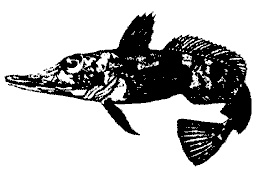 |
Science Frontiers ONLINE No. 94: Jul-Aug 1994 |
|
|
Those Strange Antarctic Fishes
 A representative Notothenioid fish from Antarctic waters. (From: Eastman, Joseph T,; Antarctic Fish Biology, San Diego, 1993.) |
"Some of them have glycoprotein antifreezes in their blood, some have no hemoglobin, some have so small a temperature tolerance that they die at temperatures above 4�C, some are neutrally buoyant despite lacking swim bladders, and some live as deep as 2950 meters. The suborder has no known fossils, largely because no bony feature -- indeed, no single character of any sort -- can be used to define it. How did these animals arrive there, what are their ancestors, how do they make a living in such an environment, and how can they support commercial harvests?"
(Policansky, David; "Southernmost Fauna," Science, 264:1002, 1994.)
Comment. Those species lacking hemoglobin in their blood are doubly perplexing: (1) Zoologists still do not know how sufficient oxygen is transported in these fishes, for what substitutes for normal blood seems inadequate; (2) How could they have evolved from hemoglobin-carrying fishes? and (3) Why switch from hemoglobin at all when other Antarctic fishes find it perfectly satisfactory?